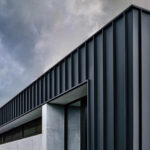In the world of architecture and construction, safety is paramount. The emergence of fire-resistant panel options has been a game-changer, offering a crucial layer of protection that goes beyond aesthetics and functionality. From public buildings to commercial spaces, these panels play a pivotal role in safeguarding lives and assets. This blog delves into the realm of fire-resistant panel options, exploring their attributes, applications, and the peace of mind they bring to the built environment.
1. Understanding Fire-Resistant Panels: A Crucial Shield:
Fire-resistant panels are specifically designed to delay the spread of flames and the release of smoke in case of a fire outbreak. These panels are engineered with materials and coatings that offer enhanced fire resistance, allowing occupants more time to evacuate and firefighters to respond effectively.
2. Mineral Fiber-Reinforced Panels: Embracing Strength and Durability:
Mineral fiber-reinforced panels are crafted by combining mineral fibers with binders and additives. These panels are known for their exceptional fire-resistant properties, as they are non-combustible and do not contribute to the spread of fire. They find application in commercial buildings, healthcare facilities, and educational institutions.
3. Gypsum Panels: Embodying Fire-Retardant Excellence:
Gypsum panels are formulated with additives that imbue them with fire-retardant properties. These panels resist ignition, flame spread, and smoke development. Gypsum panels are often used in interior walls and ceilings, contributing to fire safety in enclosed spaces.
4. Aluminum Composite Panels (ACPs) with Fire-Retardant Cores: Versatility with Added Safety:
ACPs with fire-retardant cores combine the versatility and aesthetics of ACPs with enhanced fire resistance. The core material is treated with fire-retardant additives, contributing to the panel’s ability to inhibit flames and smoke spread. They are suitable for both interior and exterior applications.
5. Ceramic Fiber Panels: Resilience Under Heat:
Ceramic fiber panels are crafted from ceramic fibers that offer exceptional resistance to high temperatures. These panels excel in environments where extreme heat is a concern, such as industrial settings or areas near heat sources.
6. Fire-Rated Insulated Metal Panels (IMPs): Doubling Protection with Insulation:
IMPs with fire-rated cores not only provide fire resistance but also offer insulation benefits. These panels have a core that combines fire-resistant materials with insulation, making them ideal for applications that require both thermal performance and fire protection.
7. Fire-Resistant Coatings: Enhancing Existing Panels:

In some cases, existing panels can be treated with fire-resistant coatings. These coatings create a protective barrier that delays the spread of flames and smoke. While not as fire-resistant as some dedicated panels, coatings can be a cost-effective way to enhance fire safety.
8. Regulatory Compliance and Certifications: Navigating Standards:
When choosing fire-resistant panels, ensure they meet relevant fire safety standards and certifications. Compliance with building codes and regulations is essential to ensuring the panels’ effectiveness in fire protection.
9. Collaborating with Professionals: Designing for Safety:
Collaborating with architects, engineers, and fire safety experts is crucial when selecting and installing fire-resistant panels. Their expertise can help design spaces that maximize fire safety without compromising design intent.
10. The Holistic Approach: Integrating Fire Safety:
Fire-resistant panels are just one component of a comprehensive fire safety strategy. Consider factors like fire exits, sprinkler systems, and emergency lighting to create a holistic approach to fire safety.
Which material is best fire-resistant?
Various building materials are fire-resistant, but some of the best ones are fire-resistant glass windows, concrete, gypsum, stucco and brick.
What material does not burn in fire?
Wool is comparatively flame-retardant. If ignited, it usually has a low burning rate and may self-extinguish. Glass fibers and modacrylic are almost flame-resistant. These synthetic fibers are designed and manufactured to possess flame-retardant properties.
Is PVC panel fireproof?
Since PVC is highly fire resistant, it is widely used in exterior construction materials such as window profiles, siding boards, or interior housing materials, such as wall-covering and flooring.
What is the best fire resistant cladding?
Aluminium, steel, and brick are combustible-free materials, and come under Class A rating. Fibre Cement Cladding and enhanced wood cladding are Class B fire rated cladding for external walls. They provide flame resistance and limited combustibility.
In an age where safety is paramount, fire-resistant panel options have emerged as indispensable tools in safeguarding lives and property. From mineral fiber-reinforced panels to innovative fire-rated ACPs, these panels contribute to a safer built environment without sacrificing design and aesthetics. By exploring the diverse options available and collaborating with experts, architects and builders can create spaces that not only inspire, but also provide the assurance of fire-resistant excellence.







